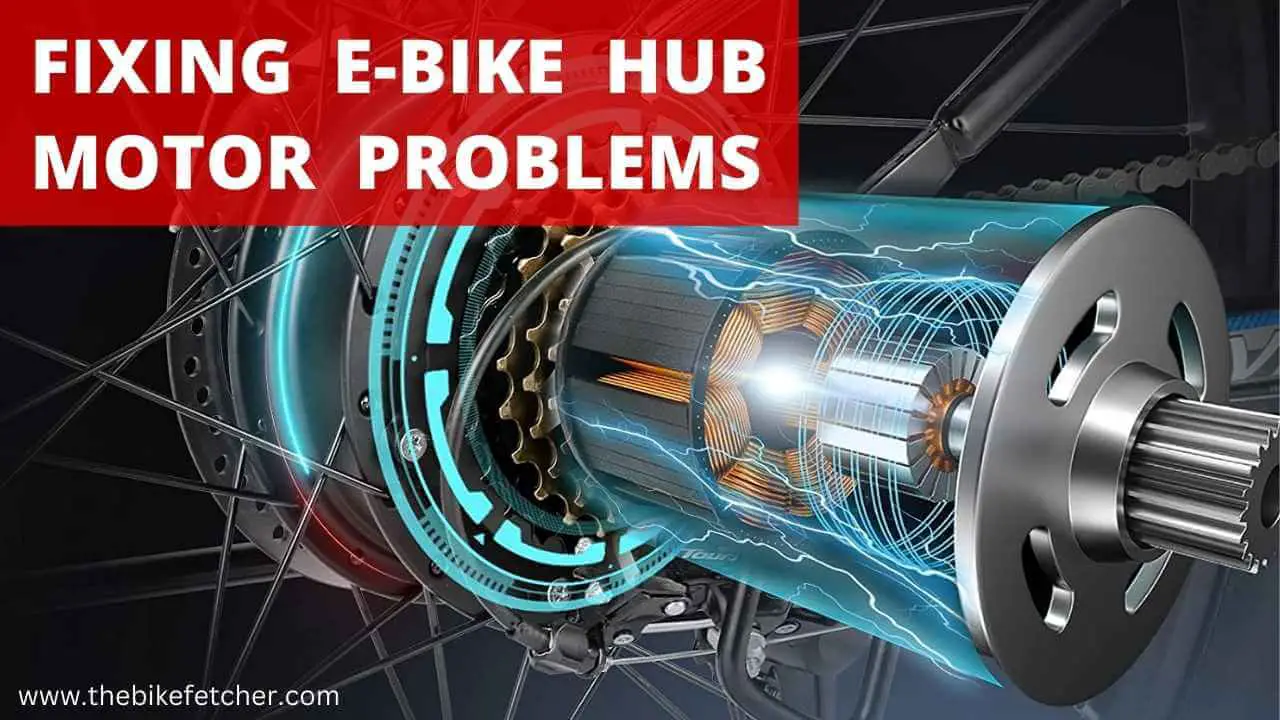So you made that shift from your boring cycles and greenhouse gas combusting vehicles to the more efficient and feature full for having exciting rides but you have been facing electric bike hub motor problems.
It has been observed that most e-bike owners with hub motors installed tend to face various issues like slow spinning and excessive vibration after just one to two years.
What are the reasons that could lead to these problems in your e-bike hub motors? How you can identify those issues beforehand? What is the solution to each of the problems? Or What are the preventive measures that you can take?
In this article, we will be addressing these problems faced by electric bike hub motor and their solutions. Moreover, we also have the best tips from e-bike riders for maintaining a healthy hub motor.
5 Common Electric Bike Hub Motor Problems
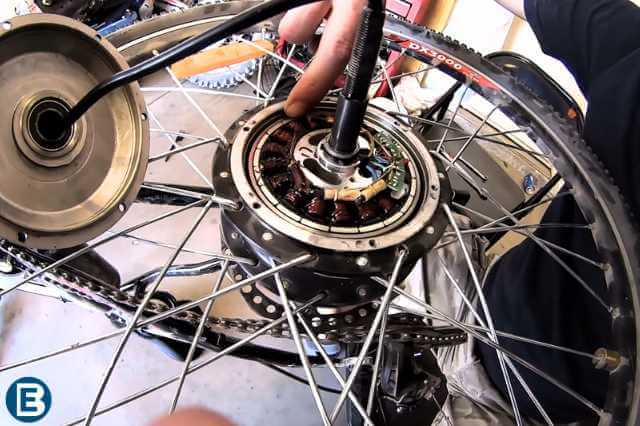
Hub motors as suggested by the name are integrated into the hub of a wheel on an e-bike and are most preferred by the riders since it eliminates the need for a traditional drivetrain with chains or belts bt directing power.
They provide propulsion and enable regenerative braking, making them efficient and compact. However, like any other mechanical component, hub motors are not immune to common issues that may arise over time.
Let’s understand these issues faced by hub motors and also their solutions that can help you maintain a prolonged e-bike life.
1. Electrical Connection Issues
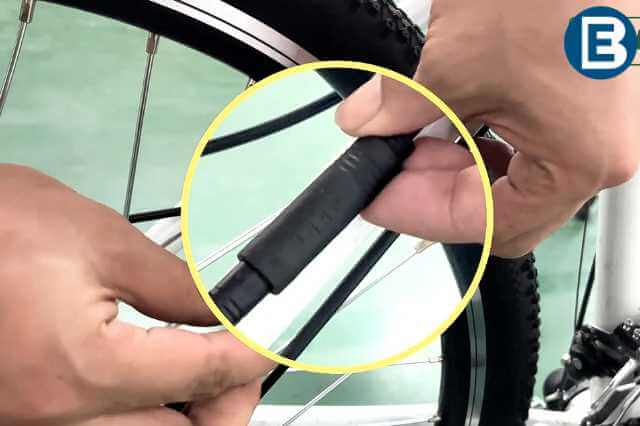
Hub motors rely on electrical connections to function properly. Loose or damaged wiring, as well as poor connections, can result in intermittent power delivery or complete motor failure. For such situations regularly inspecting the wiring harness, connectors, and cables for any signs of wear or damage is crucial.
If any issues are detected, they should be promptly repaired or replaced. You can also properly secure the cables and connections with zip ties or cable management solutions, which can help prevent loose connections.
Related: Dead Ebike Battery: How to Revive & Charge? (Explained)
2. Noisy or Vibrating Hub Motors
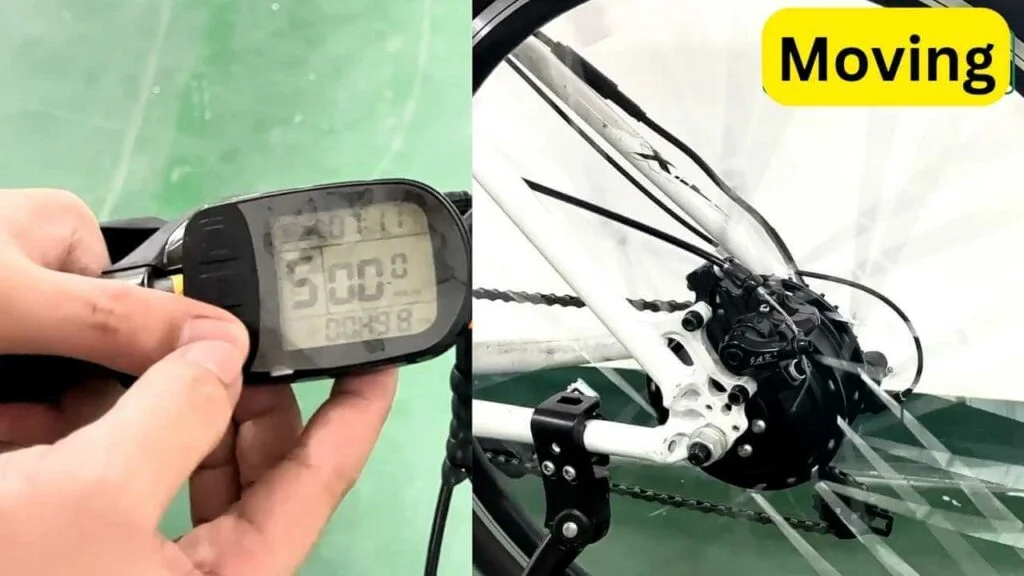
This is one of the most commonly faced issues in a hub motor hence a noisy or vibrating hub motor can indicate underlying issues that require attention. Here are some details about common causes that could lead to this noise or vibrations in a hub motor:
- Loose Or Misaligned Components.
- Worn Bearings.
- Damaged Gears.
- Imbalance in the Wheel Or Rotor.
Accurately identifying the problem and providing appropriate solutions, such as realigning components, replacing worn parts, or addressing controller issues and timely maintenance and addressing any emerging problems can help maintain a quiet and smooth-running hub motor.
Related: Is Your E-Bike Battery Safe? Revealing the Top Reasons for Battery Fires!
3. Faulty Hub Motor Controller
A faulty hub motor controller can cause various issues in the functioning of an e-bike such as inconsistent power delivery, erratic speed control and even braking problems.
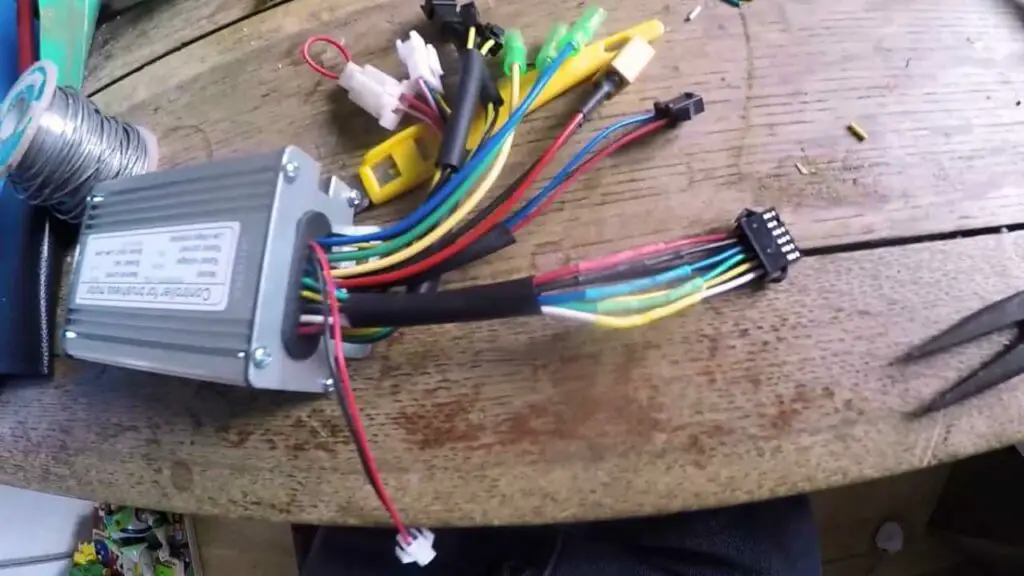
But the major issue faced by a faulty controller of a hub motor is the error codes and faulty indicators.
Many hub motor controllers feature diagnostic capabilities that can detect and display error codes or fault indicators. A faulty controller may produce incorrect or misleading error codes, making it challenging to diagnose the actual problem.
When encountering issues with a faulty hub motor controller, it is advisable to consult a professional technician or the manufacturer’s support team. In some cases, they may be able to recommend a new controller if needed or provide specific guidance on diagnosing and repairing the problem.
4. Power Loss or Inconsistent Performance
Experiencing power loss or inconsistent performance with a hub motor can be frustrating. These could lead to specific problems in your e-bike’s functioning like mechanical problems, overheating, battery issues, and even sensory troubles.
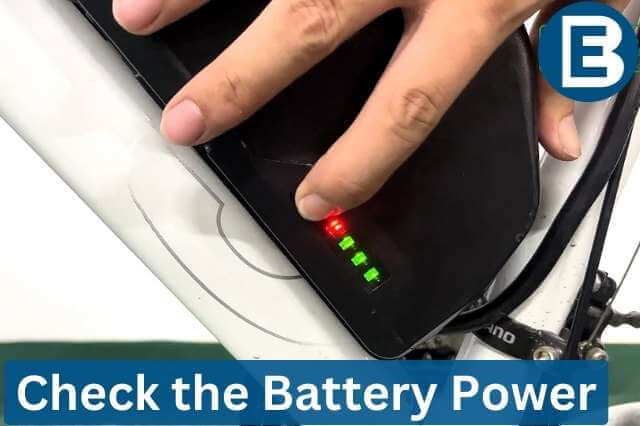
Sensory malfunctions, be it hall sensors or torque sensors on another side can result in power loss or inconsistent performance of the hub motor.
In that case, check the sensor connections, clean the sensor surfaces, and verify proper calibration to address sensor-related issues.
5. Battery-Related Problems
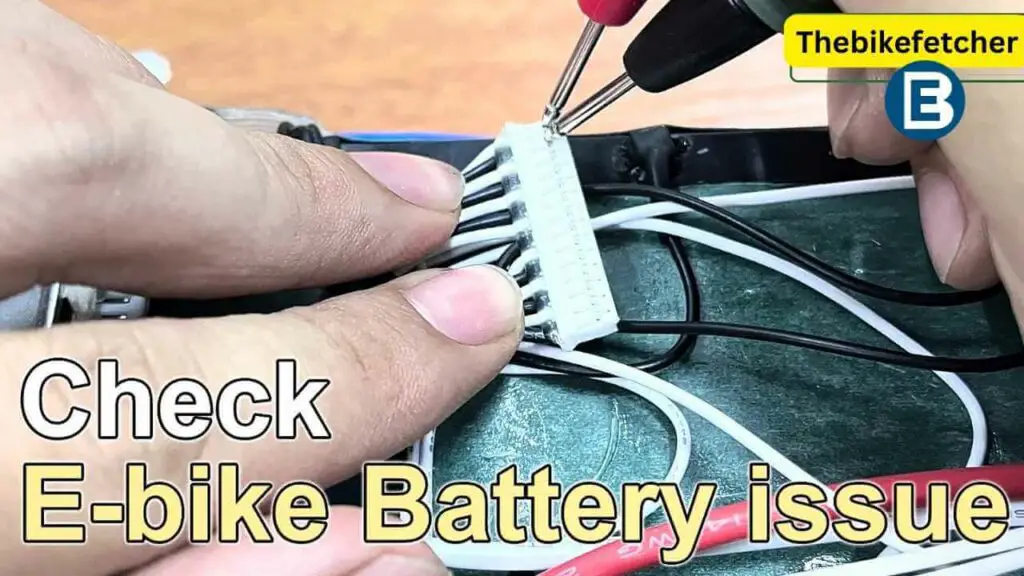
The battery is one of the key components of an ebike as the hub motor receives power from the battery for proper functioning. If the ebike battery is not charged properly, has damaged wires, overloads the battery by the motor, or is paired with the wrong size battery, the performance of the motor may not function properly.
Ebike batteries with low voltage may not provide the optimum power to the motor resulting in less speed or complete failure. Also, wrongly connected wires in the battery may cause the ebike hub motor not to work problem.
Keep your ebike batteries charged before going for a ride so you don’t face any problems associated with your battery and hub motor. Also, make sure your ebike is paired with the correct battery size.
Diagnostic Tips for Electric Bike Hub Motor Issues
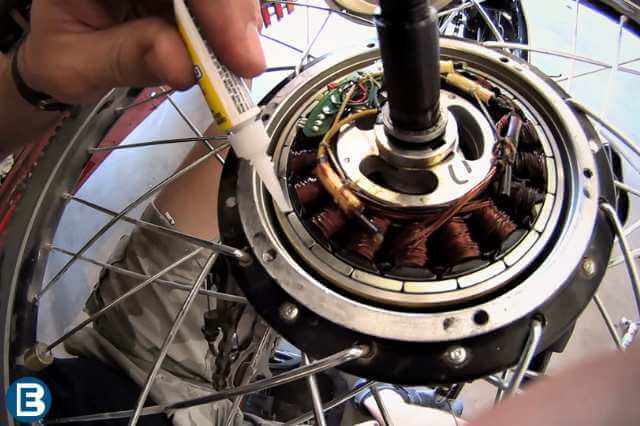
Identifying the issues beforehand is something that can save you some future troubles. Hence, while diagnosing ebike hub motor problems, follow these tips to identify and address the problem:
1. Visual Inspection: Conduct a visual inspection of the hub motor and surrounding components. Moreover, look for any signs of physical damage, loose wires, or loose connections. Ensure that all cables and connectors are securely connected.
2. Battery Check: Verify the battery’s charge level and condition. If the battery is low or depleted, recharge it or reset the BMS and retest the motor. Apart from that an old or damaged battery may need to be replaced.
3. Power Supply: Confirm that the electric bike is receiving optimal power. Check the power switch, fuse, and any circuit breakers to ensure they are functioning properly. Inspect the wiring for any visible damage or loose connections.
4. Error Codes: Some electric bikes with hub motors have error code systems. If your bike displays an error code, refer to the user manual or contact the manufacturer for information on what the code indicates and how to address the issue.
5. Sensor Functionality: If your electric bike has sensors, such as hall sensors or torque sensors, check their operation. Ensure the sensors are properly aligned, clean, and undamaged. Troubleshoot or replace any faulty sensors as needed.
6. Controller Testing: Test the hub motor controller by checking the input and output voltages. Use a multimeter to measure the voltage coming from the battery and going to the motor. Compare the readings to the manufacturer’s specifications to identify any discrepancies.
7. Performance Testing: Assess the performance of the hub motor during a test ride. Pay attention to any unusual noises, vibrations, or inconsistencies in power delivery. Note whether the motor is responding properly to throttle or pedal assist input.
If you are unable to diagnose or resolve the issue on your own, it is advisable to seek assistance from a professional technician or contact the manufacturer's support team.
They can provide more in-depth diagnostics and guidance specific to your electric bike model. Remember to prioritize safety while performing any diagnostic checks. If you are unsure or uncomfortable with any aspect of the diagnosis.
Addressing Ebike Hub Motor Overheating Problem (Fixed)
Hub motor overheating can be caused by various factors, including prolonged or intense usage, insufficient cooling, or inadequate motor design. A few common causes and solutions for hub motor overheating are listed below:
| Causes | How to Fix |
|---|---|
| Insufficient Cooling | Ensure that the motor has proper ventilation and airflow. Avoid covering the motor with obstructions or adding additional heat sources near the motor. If the motor is enclosed within a housing, consider adding cooling vents or fans to improve air circulation. |
| Overloading | Avoid prolonged operation at maximum power levels, especially when climbing steep inclines or carrying heavy loads. Monitor and adjust your riding style to prevent excessive strain on the motor. Using lower power assistance levels or selecting a higher power-rated hub motor can help prevent overloading. |
| Controller and Wiring | Ensure that the controller is matched properly to the motor and is in good working condition. Check for loose or damaged wiring connections, as they can increase resistance and generate excess heat. Replace any faulty components or wiring as necessary. |
| Inadequate Lubrication | Regularly inspect and lubricate the motor’s moving parts according to the manufacturer’s recommendations. Use appropriate lubricants compatible with the motor’s design and materials. |
| Ride Management | Allow the motor to cool down periodically during extended rides or when climbing challenging terrains. If you notice the motor getting excessively hot, take breaks to allow it to cool off. Adjust your riding style to avoid continuous high-demand situations for prolonged periods. |
| Motor Replacement | Upgrading to a higher power-rated motor or one with better heat dissipation capabilities can help alleviate overheating problems. |
Ebike Hub Motor Maintenance Tips
We have brought you the best tips from e-bike riders in order to prevent issues with ebike hub motors and ensure optimal performance and longevity of an e-bike:
- Protect the hub motor from direct contact with water and moisture.
- Avoid excessive heat and sun exposure.
- Read and follow the manufacturer’s guidelines.
- Ride responsibly and take care of the bike’s parts.
- Don’t overload and pair with the wrong size battery.
- Keep your ebike battery charged for proper power supply.
Conclusion: How to Fix Electric Bike Hub Motor Problems
Hub motors of an electric bike offer numerous advantages but also have some challenges. We have explored some of the common problems that hub motors face and provided potential solutions which we believe would come in handy for you.
Understanding these problems and their solutions empowers e-bike owners to address issues promptly, minimize downtime, and ensure optimal performance and longevity of the hub motor.
Thanks for reading this article, I have tried my best to make you proactive in diagnosing and addressing issues faced by hub motors, so you can enjoy a smoother and more reliable riding experience.
FAQs: Fixing Ebike Hub Motor Issues
-
What are the most common problems in hub motors?
There are two major problems faced by ebike hub motors i.e., hall sensor problems & phase wire problems. Most probably, The hall sensor issue is caused by the connected wires or the failure of the entire sensor. And the phase wire problem is caused by internal damage.
-
Why do hall sensors fail, what happens if it fails?
Most of the time, the hall sensors of an ebike hub motor fail due to the high temperature of the motor. When the hall sensor fails, your ebike motor will start creating a vibrating sound without any movement.
-
How long does a hub drive motor last?
The life of an ebike hub drive motor can be somewhere between 10000 to 15000 miles or 3 to 5 years whichever is earlier. It depends on your riding style and the brand of the ebike motor.
Our latest posts:
- How Long Does it Take to Charge a 72V E-Bike Battery?
- How Long to Charge 60V E-Bike Battery to Extend Its Life?
- How Long Does It Take to Charge 52V E-Bike Battery? Quick and Effective Charging Guide
- Is It Possible to Charge an Ebike While Riding? Breaking Down the Myths
- Is Your E-Bike Battery Safe? Revealing the Top Reasons for Battery Fires!

